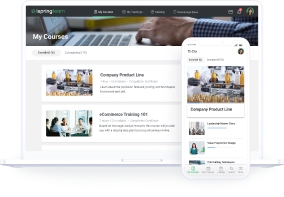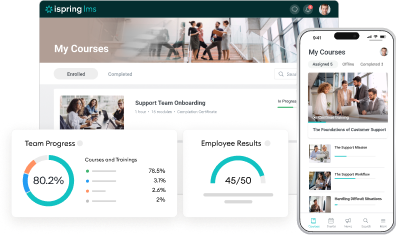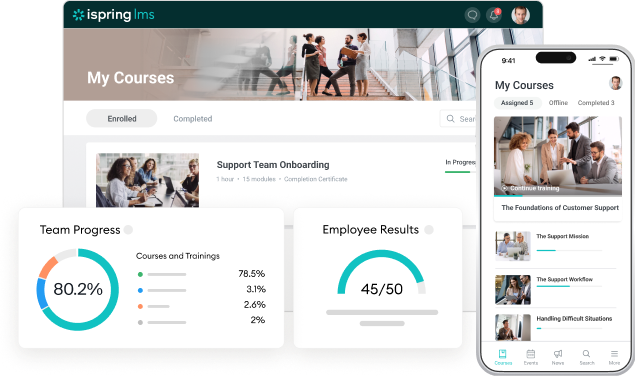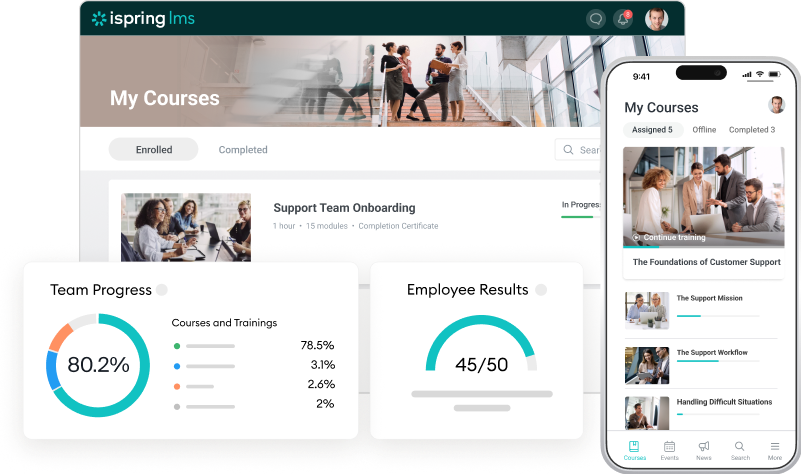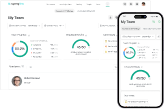Employee Offboarding Checklist: Best Practices for HR

Companies spend weeks, even months, perfecting their onboarding process — preparing welcome gifts for new hires, assigning mentors, and building a positive impression. But when it’s time to say goodbye, often the script runs out, turning the exit process into mere ticking off boxes.
Yet, the way an employee leaves is just as important as how they enter. In this guide, we’ve put together the essential HR do’s and don’ts, along with a free downloadable employee offboarding checklist that will help you get employee transitions right.
What Is Employee Offboarding?
Employee offboarding is the structured process of managing an employee’s departure from a company — whether they’re resigning, retiring, or being let go. It includes everything that happens between “I’m leaving” and the employee’s last day and is just a part of the broader employee journey:
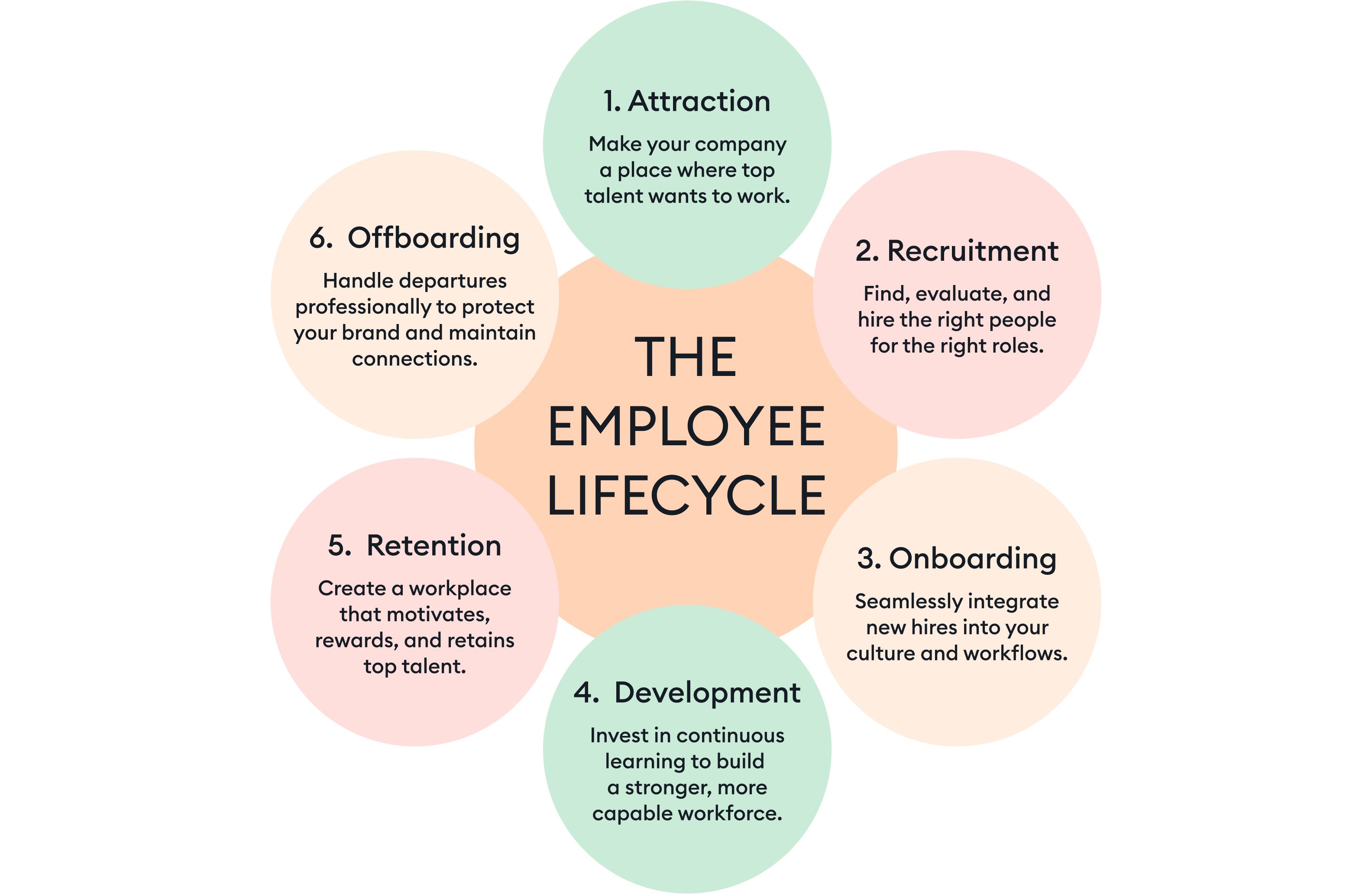
Well-managed offboarding requires collaboration across multiple departments to ensure a secure, compliant, and smooth transition. Here’s who plays a key role:
- HR (human resources) team. Oversees the entire employee offboarding process: accepts termination letters, finalizes paperwork, conducts exit interviews, and maintains a positive offboarding experience.
- Direct manager. Facilitates knowledge transfer, reassigns tasks, and ensures a smooth handover of responsibilities.
- IT department. Revokes system access, retrieves company devices, ensures sensitive data security, and prevents potential breaches.
- Finance and payroll department. Handles final paychecks, bonuses, expense reimbursements, benefits, and any outstanding financial settlements in compliance with company policies and labor laws.
- Legal team. Ensures compliance with contracts, NDAs (non-disclosure agreements), non-compete agreements, and labor regulations to mitigate legal risks.
- The departing employee. Hands over responsibilities, documents key processes, returns company property, and provides feedback through the exit interview.
- Remaining team members. Adapt to changes in workload, support the transition by absorbing tasks if necessary, and help maintain team stability and morale during the entire process.
3 Reasons to Take the Employee Offboarding Process Seriously
Former employees can become future rehires, business partners, or even your biggest brand advocates — if they leave on good terms. Here are the three most noteworthy reasons the employee offboarding process deserves your attention:

Maintain a positive HR brand and employer reputation
While the offboarding checklist is often viewed as a formal set of steps before an employee walks out the door, in reality, it’s a high-stakes moment for your employer brand. An outgoing employee takes their experience with them, and in a world where online reviews and word-of-mouth referrals influence hiring, that experience matters.
According to a Gallup survey, one-third of former employees report a negative offboarding experience, often citing indifference or outright hostility:
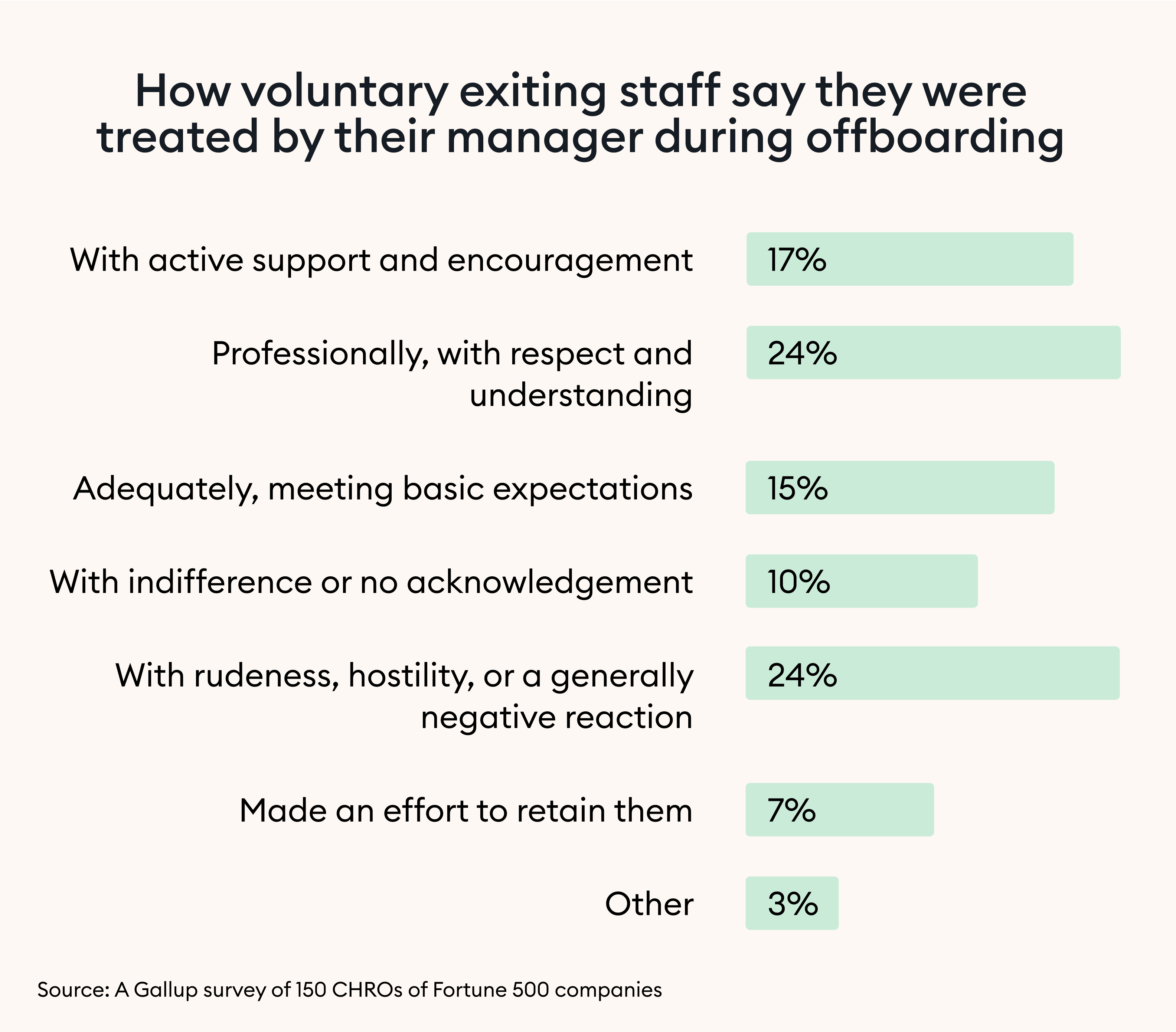
At the same time, 82% of U.S. employers rely on employee referrals to attract talent. When the offboarding process is cold or transactional, you lose dozens of potential hires, partnerships, and industry goodwill. On the flip side, former employees who exit on good terms are 43% more likely to recommend their previous organization as a great place to work, so investing in their exit experience is a strategic move that pays off long after they leave.
Prevent legal and compliance risks
Whether an exit is voluntary or involuntary, every step in the employee offboarding checklist must align with employment laws, data security regulations, and contractual obligations to protect both the company and the employee.
Mishandling final pay, severance, or benefits can lead to legal claims and financial risks, while poor communication can create unnecessary friction. Beyond payroll and contracts, data security is a major compliance concern. Failing to revoke access or recover company assets can result in GDPR, HIPAA, or other regulatory violations.
Get actionable insights for employee retention
Every resignation is a chance to understand what is and is not working. The exit interview is a unique opportunity to get unfiltered insights into why an outgoing employee is leaving and what could have made them stay.
Patterns in a departing employee’s feedback can reveal issues with management, career growth opportunities, workload, or company culture — things that might not always surface in employee engagement surveys. If employees frequently leave due to similar reasons, those are areas worth prioritizing. Tracking this data over time helps HR leaders refine policies, retain employees better, and create a work environment where existing employees want to stay.
7 Steps to Get Employee Offboarding Right
A Gallup survey of 150 CHROs from Fortune 500 companies found that only 10% believe their company handles employee exits effectively. That means most organizations, even at the enterprise level, struggle with offboarding, leaving them exposed to compliance risks, security gaps, and reputational damage.
To close this gap, we spoke with HR professionals at iSpring and put together structured, step-by-step instructions to have a positive offboarding process:
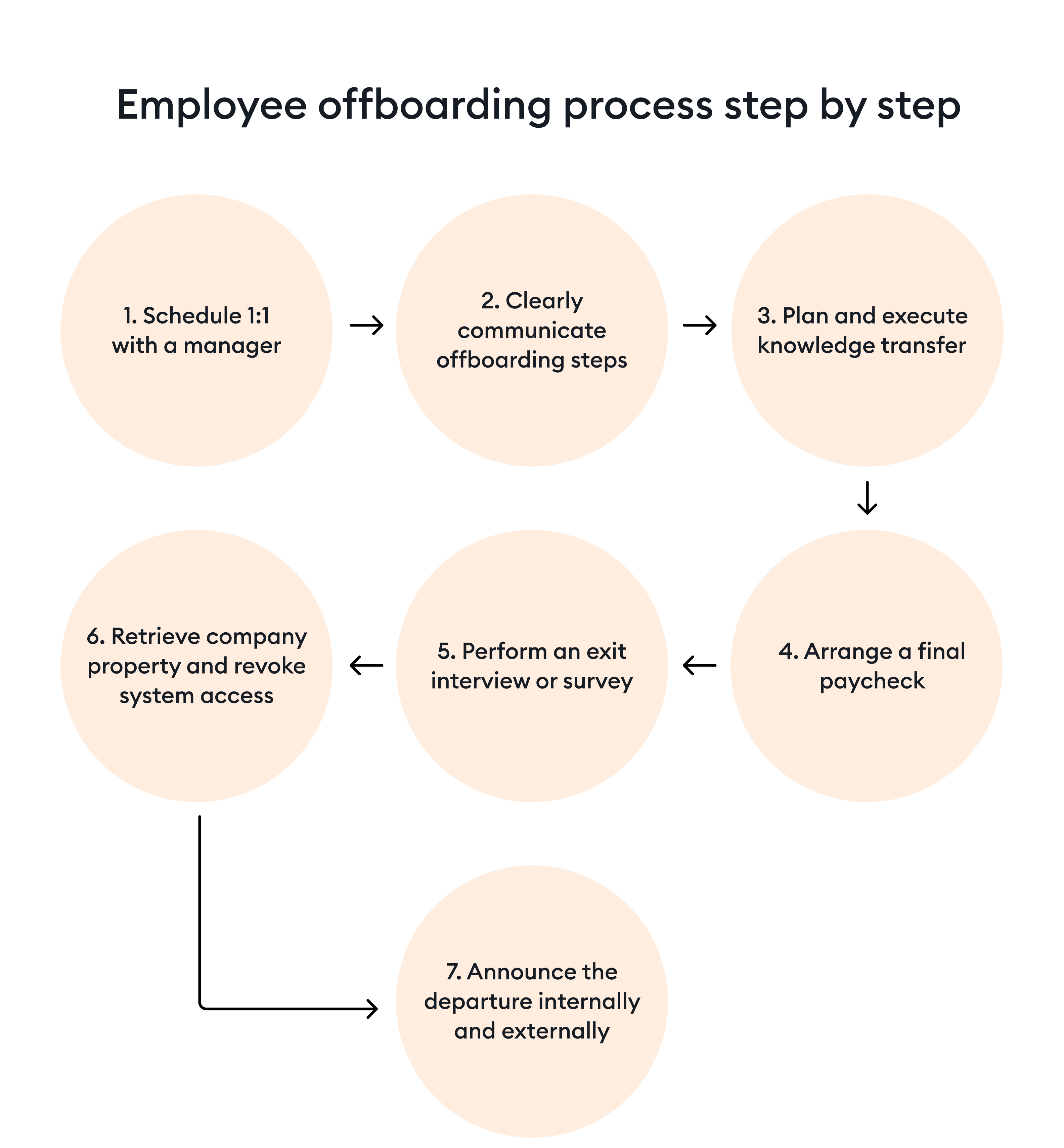
Follow the tips below or download our free Employee Offboarding Checklist to keep it at hand and check items off as you go.
Download a complete employee offboarding checklist [FREE] →
1. Schedule a 1:1 with a manager
Before starting the formal offboarding process, it’s important to have an open and honest conversation between the employee and their manager. This is a chance to understand why they’re leaving, what influenced their decision, and if there’s anything the company could have done differently.
For some exiting employees, this might confirm that leaving is the right choice. For others, it might reveal rectifiable concerns, such as career growth opportunities and workload balance. Handled well, this conversation ensures that the employee’s departure is respectful and constructive and can even result in the employee remaining with the company.
Sometimes, these conversations lead to an unexpected outcome — rather than leaving the company, an employee might find a better fit in a different role or department. A well-handled discussion can open doors to internal opportunities that they hadn’t considered before.
If parting ways is inevitable, move to the next step.
2. Accept the resignation letter and communicate offboarding steps
A well-structured resignation process sets the tone for a professional exit. Once the resignation is acknowledged, agree on the employee’s end date, ensuring it aligns with company policy and a contractual notice period. Communicate this with the employee’s manager, IT department, and finance teams to ensure a smooth transition.
Ensure that the departing employee understands what’s expected of them before they exit and who they can contact with questions. Provide a structured timeline with key steps like final pay, access deactivation, and any required paperwork before their last day. If they’re bound by non-compete clauses or confidentiality agreements, this is the time to reiterate those obligations.
3. Plan and execute a knowledge transfer process
Your exiting employees are your knowledge bank, so one of the goals of a structured offboarding checklist is to ensure that when an employee leaves, critical expertise stays within the company.

If a successor has already been hired or an internal team member is stepping into the role, set up a knowledge transfer meeting during which the departing employee can walk the team through key workflows, ongoing projects, and essential contacts. Encourage them to document important procedures, FAQs, or troubleshooting guides that will help the new hire transition smoothly.
The ideal scenario is to have a learning management system (LMS) to document key processes, responsibilities, and best practices long before someone decides to leave.
With the iSpring LMS, for example, you can make knowledge transfer far more structured and scalable. Instead of relying on scattered notes or onetime discussions, exiting employees can create micro-courses, guidelines, and standard operating procedures (SOPs) directly on the platform and save them in the knowledge base, conveniently organized by spaces and folders:
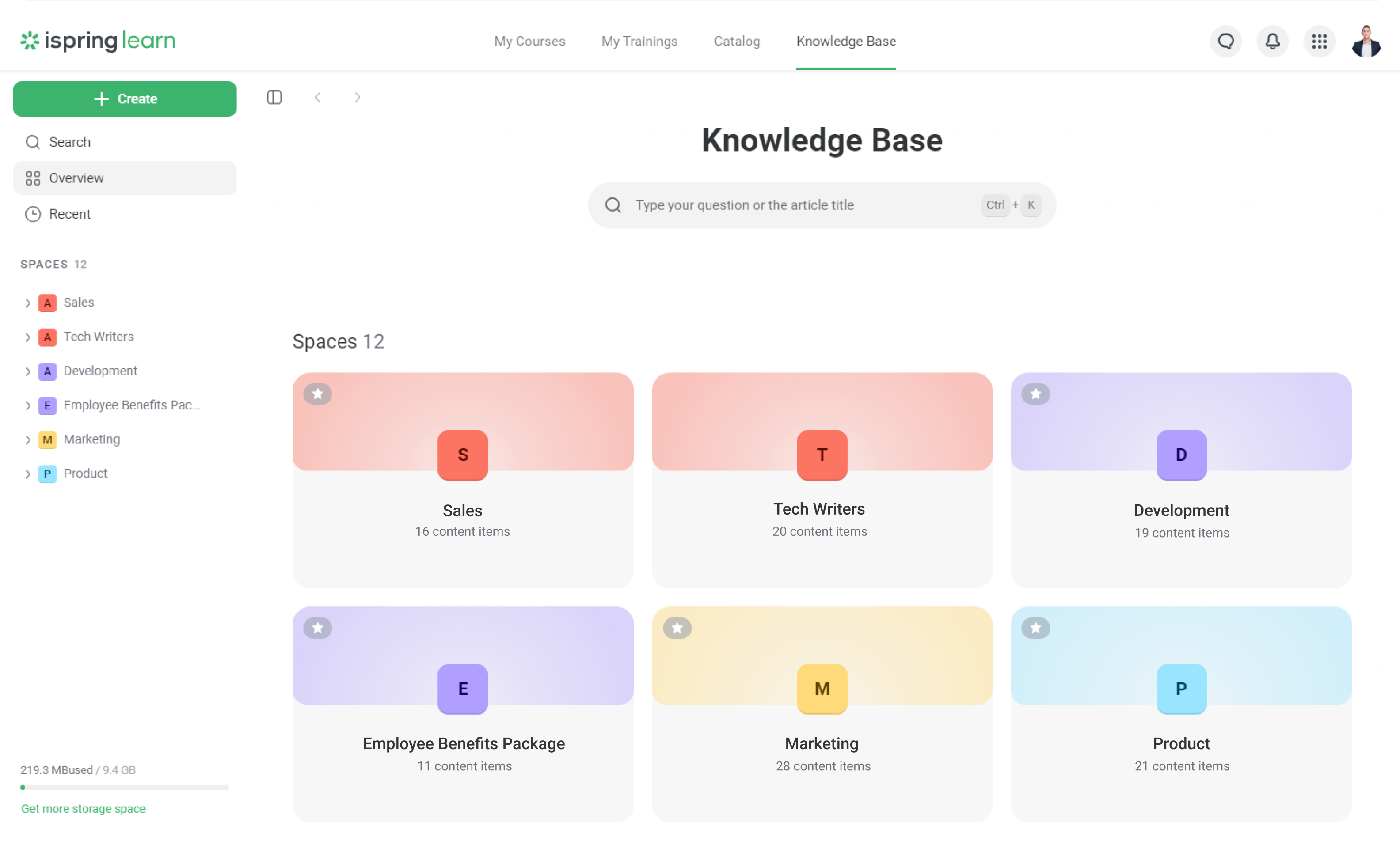
This makes it easier for replacements to access the information on demand and reduces the need for follow-up questions and last-minute clarifications.
For companies with remote or hybrid teams, this approach is even more beneficial. A well-organized knowledge base ensures that key expertise isn’t just handed over once but is appropriately stored and available whenever it’s needed.

4. Arrange a final paycheck
U.S. labor laws vary by state, so employers must ensure the timely processing of final payments like wages, unused PTO, severance pay, commissions, and bonuses to avoid disputes. Employers should check state-specific requirements to avoid wage disputes or penalties.
Beyond salary, an effective offboarding process should include a clear explanation of benefit continuation. Employees covered by company-sponsored health plans may be eligible for COBRA, allowing them to extend coverage at their own expense.
To keep everything compliant and transparent, provide a final pay statement detailing gross pay, deductions, severance (if applicable), and tax documents. The final pay information (last paycheck and/or benefits information) should be proactively communicated before their departure.
5. Perform an exit interview or survey
An exit interview (rarely an exit survey) is one of the last meaningful conversations you’ll have with an outgoing employee and a unique chance to get honest feedback on why employees leave, what’s working, and where the company needs to improve.
Start by acknowledging their contributions and reinforcing that employee feedback will help shape a better employee experience (for current and future employees.)
Ask structured, yet open-ended questions. What influenced their decision to leave? Was it career growth, compensation, leadership, workload, or something else? Go beyond generic responses and use rating scales to evaluate stress levels, compensation, or work-life balance to quantify their experience.
Exit interviews can either provide valuable insights or turn into an unproductive venting session — it all depends on how you approach them. Employees need a space in which they feel comfortable speaking openly, but the conversation should stay balanced. If they feel dismissed, they may leave with resentment, increasing the risk of negative reviews or discouraging future hires. A well-handled exit interview gives employees a chance to be heard, acknowledges the employee’s experience, and helps maintain a positive relationship even after they’ve left.
6. Retrieve company equipment and revoke systems access
Losing track of company-owned equipment and failing to revoke access to company systems can have serious consequences. 49% of companies report losing at least 5% of corporate-issued assets during offboarding, and 27% lose 10% or more, creating both financial and security risks.
To prevent this, recover company assets like laptops, ID badges, credit cards, and other equipment before the employee’s last day. For remote employees, provide clear return instructions and conduct verification of compliance with those instructions.
Additionally, take extra care when revoking employee’s access permissions. 42% of organizations reported at least 5% instances of unauthorized access to SaaS and cloud resources post-offboarding. Remember to revoke system access, deactivate accounts, and remove permissions across all platforms. Also, you can conduct an audit to ensure there’s no lingering access.
7. Announce the departure internally and externally, if needed
Letting people know about a departure correctly keeps things running smoothly and avoids unnecessary gossip. Start with the immediate team; then, inform close departments, key stakeholders, and anyone who worked closely with the departing employee so they can focus on work instead of wondering what’s going on.
If the departing employee had client or partner-facing responsibilities, notify external contacts and introduce them to their new point of contact. Internally, update org charts, email groups, and project management tools. It sounds minor, but it actually makes a big difference in terms of scheduling, approvals, and team coordination.
The 3 Most Common Employee Offboarding Mistakes
We’ve also asked our colleagues to share their experiences and highlight the most common mistakes that hinder a seamless offboarding process:

Mistake #1. Burn bridges instead of maintaining relationships
Too many companies treat offboarding as a one-way exit, severing ties the moment an employee leaves. But the reality is that careers are fluid, and today’s departing employee could be tomorrow’s valuable connection or even a returning team member.
Boomerang employees (those who leave and later return) are becoming more common, and for good reason. They rejoin with institutional knowledge, fresh perspectives, and new skills, making them a high-value hire. Similarly, former employees often stay in the same industry, meaning they could become clients, business partners, or influential voices in your field.
Mistake #2. Forget to capture unfinished work and hidden responsibilities
When an employee leaves, their official job description rarely tells the full story of the work they performed. Beyond documented tasks, offboarding employees often carry unofficial responsibilities that no one realizes until they’re gone.
To avoid project delays and workflow disruptions, ask the departing employee to list all ongoing tasks, informal responsibilities, and key contacts they worked with.
Mistake #3. Fail to assess the impact on the remaining team
What about the team members a departing employee leaves behind? Overlooking the impact on remaining employees can lead to burnout, disengagement, and even more turnover.
Some positions require an immediate replacement with new employees, while others may be an opportunity to rethink responsibilities and team structure. Communicate clearly with the remaining team and don’t assume they’ll automatically adjust.
If hiring is needed, start the process early. Delays in recruitment can create prolonged stress for teams that are already handling an even heavier workload. Ideally, workforce planning should be proactive, through succession planning, internal talent development, and a clear hiring strategy.
Final Thoughts
The employee offboarding process is a strategic responsibility that impacts compliance, knowledge retention, team morale, and even future hiring.
We hope this guide will help you close the chapter professionally and on a positive note, keep current employees engaged, and avoid unnecessary risks to your HR brand.




